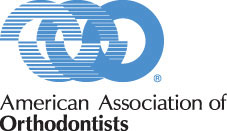Good Oral Hygiene During Orthodontic Treatment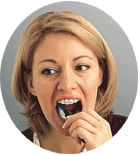 You, your orthodontist and your family dentist are now a team. You all want the same thing – for you to have a healthy smile with beautiful, white, straight teeth. We will straighten your teeth and your dentist will help keep them clean and check for problems periodically. But you’re the one who has to take care of your teeth every single day during treatment to keep them clean, healthy and white. That means closely following the instructions we provide.Now that you have braces, proper dental care will take a little extra time and effort. But in the end, that time spent will be well worthwhile. By taking good care of your teeth now, you’ll get the best possible results from your orthodontic treatment.
You, your orthodontist and your family dentist are now a team. You all want the same thing – for you to have a healthy smile with beautiful, white, straight teeth. We will straighten your teeth and your dentist will help keep them clean and check for problems periodically. But you’re the one who has to take care of your teeth every single day during treatment to keep them clean, healthy and white. That means closely following the instructions we provide.Now that you have braces, proper dental care will take a little extra time and effort. But in the end, that time spent will be well worthwhile. By taking good care of your teeth now, you’ll get the best possible results from your orthodontic treatment.
Plaque is the Problem.
Plaque is a sticky, colorless film that collects on your teeth. It’s composed of bacteria, food and saliva. If plaque and trapped food are left on your teeth and around your braces, they can cause swollen gums, bad breath, cavities and permanent marks on your teeth. Plaque can also discolor your teeth and make them look yellow. To make sure none of these things happen to your teeth, brush often and floss every day. And remember to visit your family dentist regularly for check-ups.
When to Clean:
- Brush thoroughly at least four times a day: after every meal and before you go to bed.
- If you can’t brush right away after a meal, be sure to at least rinse your mouth well with water until you can brush. That way, you’ll clear your braces of most of the large food particles. A travel toothbrush is a great way to make brushing more convenient when you’re at school or work.
- At least once every day, brush your teeth and braces thoroughly until they are spotlessly clean, and then floss. This takes a little extra time, so you may want to do it at night before going to bed so you don’t feel rushed.
 How to Brush:
How to Brush:
- Use a fluoride toothpaste and a soft, rounded-bristle toothbrush that’s in good condition. Because braces wear out a toothbrush quickly, replace your brush as soon as it shows signs of wear.
- Brush your teeth and braces the way your orthodontist and staff members instruct you.
- Brush around all the parts of your braces and every surface of your teeth. Remember to brush the backsides of your teeth, and be sure to brush your tongue. Doing this will not only help to remove food particles from your mouth, it will make your breath fresher, too.
- Brush your gums gently and thoroughly.
- Rinse thoroughly after brushing. Swish the water all around your mouth and teeth.
- Inspect your teeth and braces carefully to make sure they are spotless. Look closely in a well-lighted mirror.
We may recommend the use of a “disclosing rinse” that will help you see any places you may have missed with your toothbrush. You may have to brush and rinse two or three times before all the plaque is gone. This may sound difficult, but it’s very important. Remember: they are your teeth, and to keep them for the rest of your life you need to take good care of them! A healthy, beautiful smile is worth the effort.
How to Floss:
Flossing is one of the most important parts of taking care of your teeth during your orthodontic treatment. To practice good flossing technique, follow these simple directions: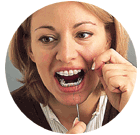
- When flossing with braces on, it might be necessary to use what’s called a floss threader. This reusable tool allows you to get dental floss underneath your archwire easily.
- Cut off about 18 inches of floss and loop it through your threader, run the threader under your archwire between two brackets, and, holding one end of the floss, gently pull the threader off.
- Loop the ends of the floss around your index fingers, forming a “C,” and gently floss between your teeth as you normally would. Make sure to carefully clean along your gumline on both sides. When finished between two teeth, just pull the floss through, re-thread the floss through the loop, and repeat the process between your next pair of teeth.
It’s a good idea to get into the habit of flossing at night before you go to bed. That way, you won’t feel as rushed and will take your time. Flossing with braces on may seem like a difficult process, but it’s very important. And as with anything, a little practice will make it go a lot faster.
Other Hygiene Helpers.
Your orthodontist, dentist or dental hygienist will probably recommend some of the following aids to help keep your teeth clean. If you have any questions about how to use them, don’t be shy. Ask the orthodontist, assistant or hygienist to explain them to you.
Interproximal brush
This tool is designed to slip under your archwire to more completely remove plaque and food particles near your brackets.
 Prescription fluoride toothpaste or fluoride rinse.
Prescription fluoride toothpaste or fluoride rinse.
Use once a day as part of your cleaning routine, if prescribed. For the best results, use it with your interproximal brush to deliver maximum fluoride protection to your teeth. We may also recommend an over-the-counter fluoride rinse.
 Electric toothbrush or water irrigator.
Electric toothbrush or water irrigator.
These devices are designed to make brushing easier and more efficient. Ask us if they’d be helpful during your treatment.
New Products.
New techniques and technologies are constantly being developed to help improve results from orthodontic treatment. Ask us if any new products will help you with your daily dental hygiene.
The Problems Bad Oral Hygiene Can Cause During Treatment.
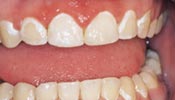 Good dental hygiene is a very important part of your orthodontic treatment. Without it, food tends to become trapped in and around your braces, encouraging the accumulation of plaque, a colorless film of bacteria. The bacteria in plaque react with the sugars and starches in food and form an acid that can eat away the enamel on your teeth, leading to cavities.
Good dental hygiene is a very important part of your orthodontic treatment. Without it, food tends to become trapped in and around your braces, encouraging the accumulation of plaque, a colorless film of bacteria. The bacteria in plaque react with the sugars and starches in food and form an acid that can eat away the enamel on your teeth, leading to cavities.
If you allow plaque to accumulate around your braces, it can leave permanent stains on your teeth when your braces are removed. This damage is called decalcification and these lines and spots will remain on your teeth for life.
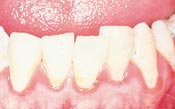 Periodontal disease, caused by the buildup of plaque, occurs in three stages. In the first stage, the plaque accumulation irritates the gums around your teeth, leading to bleeding and swelling. This first stage is called gingivitis.
Periodontal disease, caused by the buildup of plaque, occurs in three stages. In the first stage, the plaque accumulation irritates the gums around your teeth, leading to bleeding and swelling. This first stage is called gingivitis.
Over time, this plaque buildup may harden into a substance called tartar. As tartar accumulates, a condition called periodontitis will develop, causing a gap to form between your gums and teeth where even more tartar can accumulate.
In the last stage, or advanced periodontitis, pockets of bacteria form and deepen beneath your gums, attacking and destroying the bone that anchors your teeth, and making even healthy teeth loosen and eventually fall out.
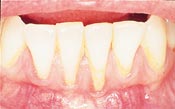
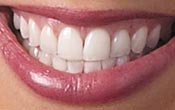 As scary as these conditions are, the simple truth is that they’re all easily avoidable. By brushing and flossing regularly, you’ll keep your teeth and gums in top condition and ensure that your orthodontic treatment will deliver the healthiest smile possible in the shortest period of time.
As scary as these conditions are, the simple truth is that they’re all easily avoidable. By brushing and flossing regularly, you’ll keep your teeth and gums in top condition and ensure that your orthodontic treatment will deliver the healthiest smile possible in the shortest period of time.
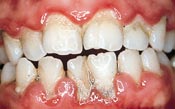
Want a Great Smile? Check Yourself.
Today have you:
- Removed every trace of plaque and trapped food from all the surfaces of your teeth-fronts, backs, tops and under your wires?
- Paid very close attention to brushing at the gum line?
- Used dental floss, special brushes, mouthwashes and fluoride mouth rinse as recommended by your orthodontist or dentist?
- Rinsed thoroughly after brushing?
- Inspected your teeth and braces to make sure they’re spotless?
Take good care of your teeth and braces. Then, when your braces come off, you’ll see that your extra efforts have been rewarded with a healthy, great-looking smile that’s good for life.

